
Arizona consistently produces the highest yields and quality of crops found anywhere. This is a testimony to not only the skill of Arizona farmers and the capacity to irrigate and produce crops in the desert but also to the productive soils that we are fortunate to have in this region. Soils are commonly considered to serve as the foundation of agriculture (Parikh and James, 2012) and that is certainly true in Arizona.
Many people think Arizona is composed of nothing but rocks and sand. While we do have an abundance of rocks and sand in Arizona, this region also has many areas with soils that are geologically young, with high natural fertility, and extremely productive if provided with sufficient water and good management.
Most Arizona crops are produced on alluvial soils that are formed from the deposits of sediments from periodic flooding of rivers and streams over thousands and millions of years. The alluvial soils used in Arizona crop production vary tremendously across the state and the entire desert Southwest. They vary in texture, depth, and structure. Our crop production capacities in this region are supported by the irrigation water and these incredible soil resources.
A great example of the rich alluvial soils of this region can be found in the lower Colorado River valleys including Mohave Valley, AZ; Parker Valley, AZ; Palo Verde Valley, CA; Imperial Valley, CA; Bard Valley, CA; Yuma Valley, Arizona; and the lower Gila Valleys of Arizona. The alluvial sediments that have formed the soils we encounter in the lower Colorado River system are estimated to have been deposited to several hundred meters (several thousand feet) in depth in the current river channel approximately 4.63 to 4.80 million years ago (Crow et al., 2021 and Kimbrough et al., 2015). These sediments are geologically “young” in contrast to the ancient crystalline rocks at the bottom of the Grand Canyon, often referred to as the “Vishnu Basement Rocks” that are 1,680 – 1,750 Ma (1.68 – 1.75 billion (b) years ago), (Crow, et al., 2021 and Mathis and Bowman, 2018).
In 1941, Dr. Hans Jenny from the University of California – Berkeley, published Factors of Soil Formation: A System of Quantitative Pedology. [Pedology is the scientific study of soils and their weathering profiles, including the formation, nature, ecology, and classification of soil.] This book is a classic and fundamental piece of work in the study of soil science due to Jenny’s capacity to translate the basic concepts into a quantitative scientific framework through a rigorous definition of the soil system and its genesis, including the identification and separation of dependent and independent variables.
Jenny described soil formation as a function of five factors: climate, biota (plants and animals), relief (topography), and parent material, all operating together over time (Figure 1).
Alluvial soils tend to be highly variable both horizontally across the landscape and vertically down through the soil profile. This can sometimes present challenges in field-level management for crop production, particularly when soil types change within a given field or relatively small area, which is rather common.
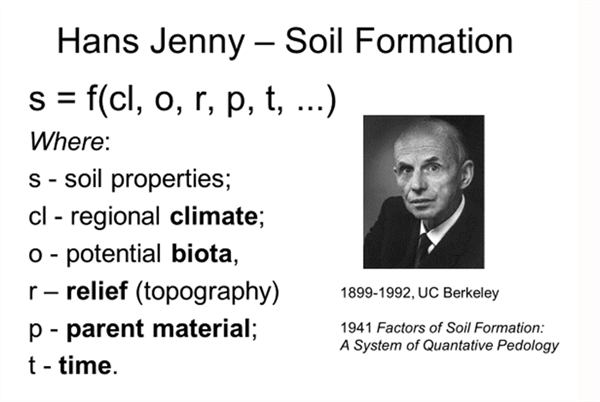
Figure 1. Hans Jenny and the factors of soil formation, 1941.
We commonly find that soil formation will vary tremendously across a landscape with natural soil variation across the landscape in both the horizontal and vertical dimensions with the distinct organization of soil horizons (Figures 2 and 3).
It is important to recognize soil variability in a crop production system because different soil types will have unique physical and chemical properties that can affect things like soil-water holding capacity, drainage, leaching capacities, soil fertility, and plant root development.
The United States Department of Agriculture (USDA) Natural Resources Conservation Service (NRCS) has conducted extensive soil surveys across the United States for each state by county. Soil surveys can be accessed on-line at the following site: https://websoilsurvey.nrcs.usda.gov/app/
A broad map selected from NRCS Soil Survey of the Yuma area graphically depicts both the alluvial nature and variability of the soil resources commonly encountered in this area. https://websoilsurvey.nrcs.usda.gov/app/WebSoilSurvey.aspx
It is important to recognize the importance and high value of these natural soil resources that our agricultural systems are developed and dependent upon and be alert to the natural variability associated with the alluvial soils in this region.
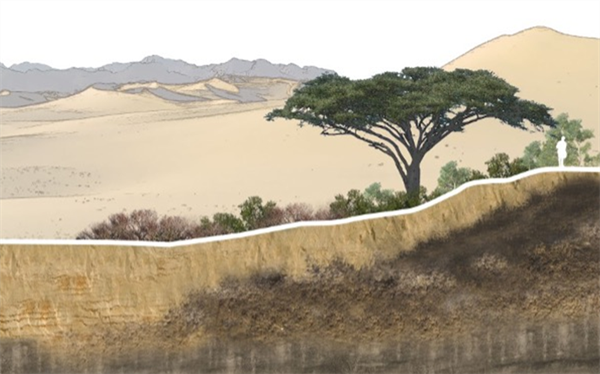
Figure 2. Natural variation of soils across a landscape
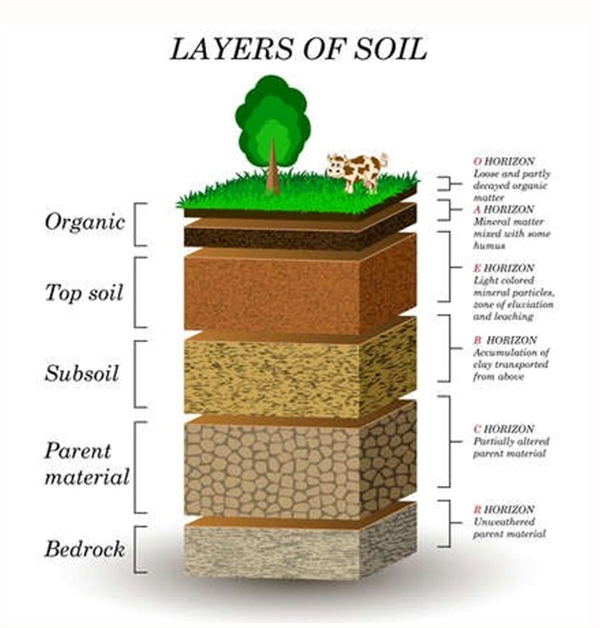
Figure 3. Layers of soil, basic organization of soil horizons.
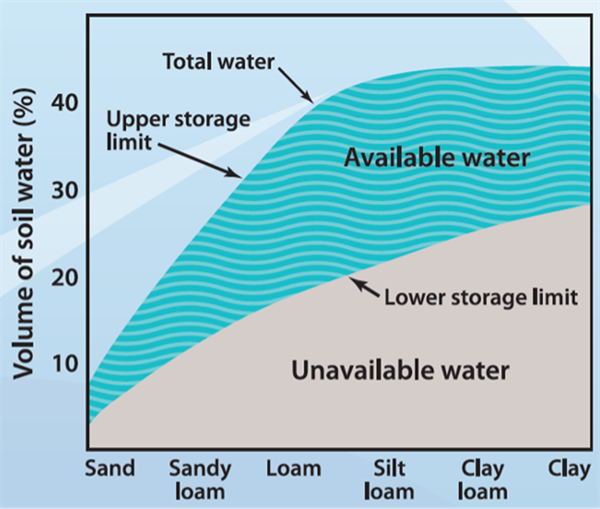
Figure 4. Soil volume, soil texture, and water holding capacity
relationships. Source: Kansas State University Agronomy Department, Soil
Laboratory Manual.
References:
Crow, R.S., J. Schwing, K.E. Karlstrom, M. Heizler, P.A. Pearthree, P.K. House, S. Dulin, S.U. Jänecke, M. Stelten, and L.J. Crossey. 2021. Redefining the age of the lower Colorado River, southwestern United States: Geology, v. 49, p. 635–640, https://doi.org/10.1130/G48080.1
Jenny, H. 1941. Factors of Soil Formation: A System of Quantitative Pedology. McGraw-Hill Book Company. New York and London.
https://netedu.xauat.edu.cn/sykc/hjx/content/ckzl/6/2.pdf
Kimbrough, D.L., M. Grove, M., G.E. Gehrels,, R.J. Dorsey, K.A. Howard, O. Lovera, A. Aslan, P.K. House, and P.A. Pearthree. 2015. Detrital zircon U-Pb provenance of the Colorado River: A 5 m.y. record of incision into cover strata overlying the Colorado Plateau and adjacent regions:
Geosphere, v. 11, p. 1719–1748, https://doi.
org/10.1130/GES00982.1.
Kansas State University Agronomy Department, Soil Laboratory Manual: Soil and water relationships. https://kstatelibraries.pressbooks.pub/soilslabmanual/chapter/soil-and-water-relationships/
Mathis, A. and C. Bowman. 2018. Telling Time at Grand Canyon National Park. United States Department of the Interior, National Park Service.
Parikh, S. J. and B.R. James. 2012. Soil: The Foundation of Agriculture. Nature Education Knowledge 3(10):2
https://www.nature.com/scitable/knowledge/library/soil-the-foundation-of-agriculture-84224268/#
Frost and freeze damage affect countless fruit and vegetable growers leading to yield losses and occasionally the loss of the entire crop. Frost damage occurs when the temperature briefly dips below freezing (32°F).With a frost, the water within plant tissue may or may not actually freeze, depending on other conditions. A frost becomes a freeze event when ice forms within and between the cell walls of plant tissue. When this occurs, water expands and can burst cell walls. Symptoms of frost damage on vegetables include brown or blackening of plant tissues, dropping of leaves and flowers, translucent limp leaves, and cracking of the fruit. Symptoms are usually vegetable specific and vary depending on the hardiness of the crop and lowest temperature reached. A lot of times frost injury is followed by secondary infection by bacteria or opportunist fungi confusing with plant disease.
Most susceptible to frost and freezing injury: Asparagus, snap beans, Cucumbers, eggplant, lemons, lettuce, limes, okra, peppers, sweet potato
Moderately susceptible to frost and freezing injury: Broccoli, Carrots, Cauliflower, Celery, Grapefruit, Grapes, Oranges, Parsley, Radish, Spinach, Squash
Least susceptible to frost and freezing injury: Brussels sprouts, Cabbage, Dates, Kale, Kohlrabi, Parsnips, Turnips, Beets
More information:
Interested in staying up to date on the latest robotic ag technologies? FIRA USA is hosting a 3-day Robotics and Autonomous Farming Solutions in Action Forum September 19-21st in Salinas, CA. The focus is on autonomous farming and agricultural robotic solutions. The event includes high-level keynote speakers, breakout sessions, a trade show and in-field demos of automated/robotic planting, weeding and harvesting equipment. Last year’s conference was excellent with informative presentations/panel discussions, plenty of time to network, 20 robots on display and top-level company representatives on hand to answer questions. This year’s program looks to be outstanding as well with over 25 robots and 12 robot demos scheduled already. For more information, visit https://fira-usa.com/.

Occasionally in organic agriculture, mechanical practices, prevention, and management of natural cycles for weed control could fail. With the limited number of herbicides available in organic production systems any information and data collected can be useful. We established a trial in a celery field with a high infestation of Annual Bluegrass (Poa annua). Our goal was to obtain data from an evaluation of Supress herbicide EC.
This organic herbicide contains Caprylic acid (47%), Capric acid (32%) it’s a post-emergent, non- selective, broad spectrum, non-volatile, and non-systemic. The idea was to test the efficacy is in controlling annual bluegrass and celery’s tolerance to it.
Plots consisted of one 80” bed 30ft long replicated four times with 6 seed lines, and the test was established in a randomized complete block design with four replications. A CO2 backpack with a 4 flat fan nozzle boom spaced at 20” was used delivering 20 gallons/acre. The application was done December 28, 2022 with grass at ~10 leaves.
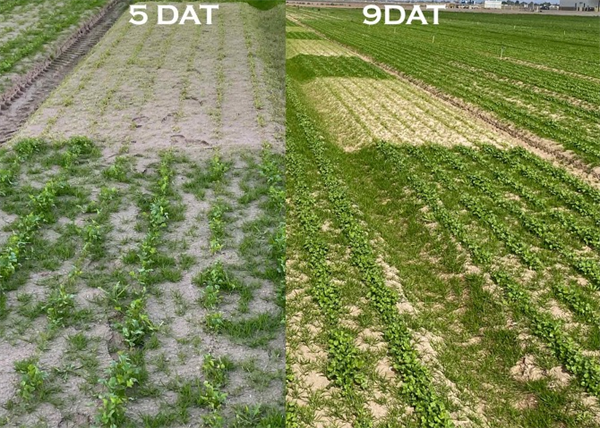
Figure 1. View of the plots at 5 and 9 days after caprylic acid application.
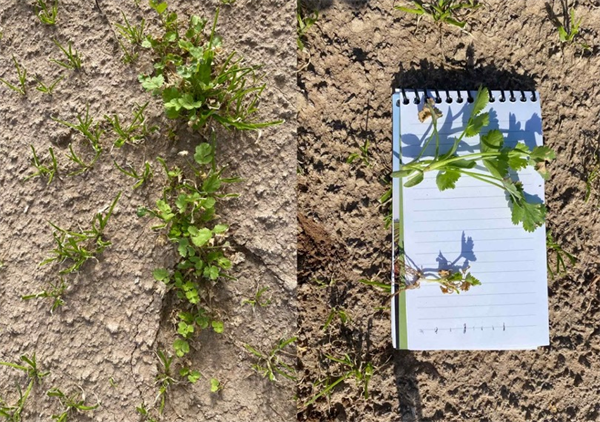
Figure 2. Difference in celery size nine days after application
The low rate of Supress (9%) did not control the grass causing only minor temporary symptoms. At the 5-day evaluation it appeared like the grass and cilantro wouldn’t survive the 2x rate. In the 9-day evaluation the grass and cilantro were recovering.
In this test annual bluegrass at 10-12 leaves was not fully controlled with 9% and 18% solution of Suppress. Although reduced in size the crop and the grass both recovered from this non-selective herbicide. Could this product be used in this crop to control a more susceptible weed at a lower rate? Let us know what you think and if we can be of help putting some test plots.
Results of pheromone and sticky trap catches can be viewed here.
Corn earworm: CEW moth counts remain at low levels in all areas, well below average for this time of year.
Beet armyworm: Trap increased areawide; above average compared to previous years.
Cabbage looper: Cabbage looper counts decreased in all areas; below average for this time of season.
Diamondback moth: DBM moth counts decreased in most areas. About average for this time of the year.
Whitefly: Adult movement beginning at low levels, average for early spring.
Thrips: Thrips adult counts reached their peak for the season. Above average compared with previous years.
Aphids: Aphid movement decreased in all areas; below average for late-March.
Leafminers: Adults remain low in most locations, below average for March.